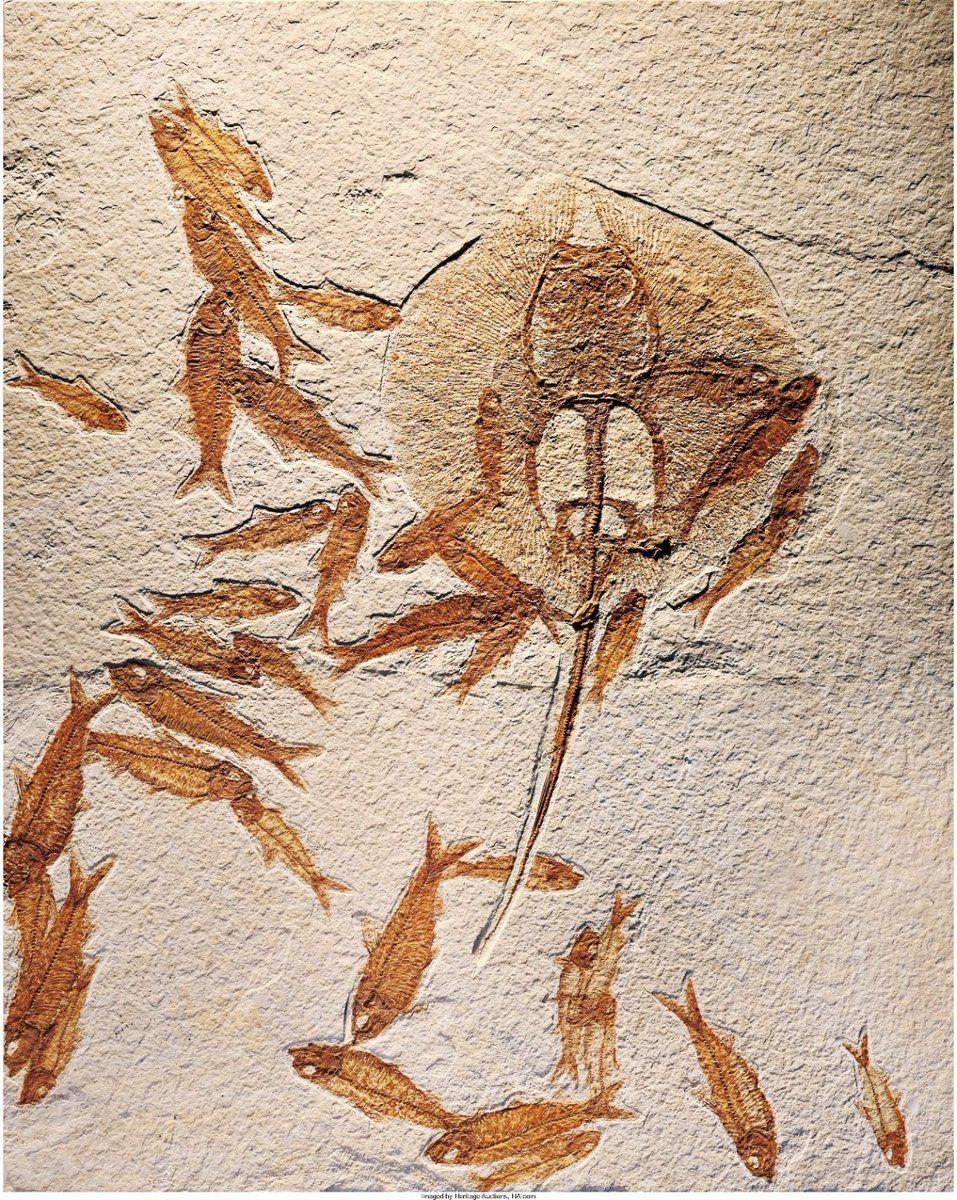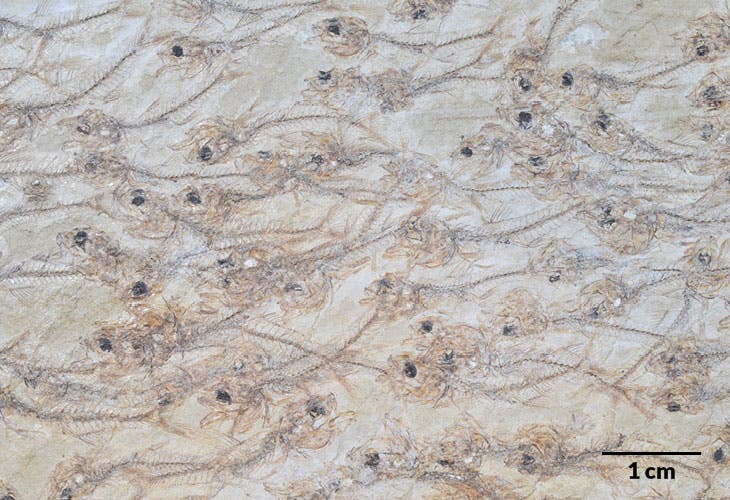The 50-million-year-old slab of limestone suggests that fish have been swimming in unison for far longer than previously realized

The prehistoric school seems to adhere to the laws of attraction and repulsion, with members maintaining enough distance between neighbors without straying too far from the group Mizumoto et al.
In 2016, Arizona State University biologist Nobuaki Mizumoto chanced upon an unusual fossil while exploring the collections of Japan’s Fukui Prefectural Dinosaur Museum. Dated to around 50 million years ago, the limestone slab—originally discovered in the United States’ Green River Formation, an area now occupied by Colorado, Wyoming and Utah—appears to depict a school of fish frozen in the midst of migration.

Although it’s difficult to confirm this theory, mainly because the fish existed in a three-dimensional environment and the fossil is inherently two-dimensional, a new study published in Proceedings of the Royal Society Boffers a convincing argument for the schooling scenario, outlining evidence that fish have been swimming in unison for far longer than researchers previously realized.
As Lucas Joel reports for The New York Times, the 259 juvenile fish found in the fossil likely belong to the extinct species Erismatopterus levatus. All of the specimens are facing the same direction, and each measures under an inch long. Much like modern schools of fish, the prehistoric one seems to adhere to the laws of attraction and repulsion, with members maintaining enough distance between neighbors without straying too far from the group.

To better gauge the school’s movements in life, the team measured the exact position and direction of each individual fish. Next, Gizmodo’s George Dvorsky writes, the scientists ran 1,000 computer simulations designed to predict the group’s most plausible next position, as determined by factors including water currents and spatial distribution. Overall, the models appear to align with behaviors exhibited by modern fish schools, or shoals, suggesting that the fish in question were, as NOVA Next’s Katherine J. Wu writes, “undulating along in a coordinated fashion,” when they met their demise.
If the fish were traveling as a pack, it’s likely they did so to reduce the risk of falling prey to predators Mizumoto et al.

If the fish were indeed traveling as a pack, it’s likely they did so for the same reasons as their contemporary counterparts: to reduce the risk of falling prey to predators. The researchers’ simulations showed that the fish converged in the greatest numbers at the center of the school, where they were better protected from hungry marine creatures’ attacks, reports Brooks Hays for UPI.
As NOVANext‘s Wu notes, there’s one major caveat to the scientists’ theory—namely, the impossibility of determining what killed the fish and how quickly the scene played out. If a collapsing sand dune froze the school in place within seconds, then the fossil probably represents an exact or nearly exact manifestation of the animals’ movements. If the burial took longer than a few seconds, however, it’s possible the fish weren’t swimming as a school at the time of their death, but rather moved into the formation during the fossilization process. It’s also possible, according to The New York Times’ Joel, that the fish were already dead at the time of fossilization.

“I can’t picture a three-dimensional school of fish sinking to the bottom and maintaining all their relative positions,” Roy Plotnick, a paleontologist at the University of Illinois at Chicago who was not involved in the study, tells Joel. “That makes no sense to me.”
Still, Michael Benton, a vertebrate paleontologist at England’s University of Bristol, explains to Joel, “The slab surely does represent a shoal of young fishes.”
Benton concludes, “Whether the spacing represents the original is tricky, to be sure.”





